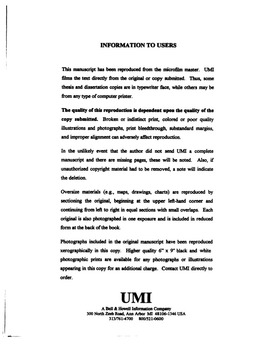| dc.contributor.advisor | Smith, Patricia, | en_US |
| dc.contributor.author | Azzarello, Phyllis Jo. | en_US |
| dc.date.accessioned | 2013-08-16T12:29:52Z | |
| dc.date.available | 2013-08-16T12:29:52Z | |
| dc.date.issued | 1997 | en_US |
| dc.identifier.uri | https://hdl.handle.net/11244/5552 | |
| dc.description.abstract | To investigate the research questions posed by this study, a novice/expert comparison design was used. The problem solving domain of interest was home health care nursing, with five newly licensed RNs participating as novices and five RNs experienced in home care nursing participating as experts. Participants completed a written question-answering task to measure pertinent knowledge structures, read a patient scenario, and answered scenario-related questions while thinking aloud. The scenario described a patient who had multiple concurrent, interacting problems plus was likely to develop additional problems if no interventions were instituted. | en_US |
| dc.description.abstract | The findings of the study provided evidence that experts' underlying knowledge structures were more accurate, extensive, and interconnected than the novices'. Also, experts' problem representations were more complete, complex, and cohesive than those of the novices, with experts demonstrating some superiority in recognizing potential problems as well. Weaker knowledge links in underlying structural knowledge appeared to be associated with lesser ability to draw appropriate inferences during problem representation. Experts also appeared to have more knowledge of conditions of applicability of underlying knowledge to the problem situation than did the novices. A moderate positive relationship was also found between interconnectivity of structural knowledge and cohesion of problem representation. | en_US |
| dc.description.abstract | Previous research on problem solving has shown that possession of organized and interconnected knowledge structures appear to underlie superior problem representation ability. The majority of research on the relationship of structural knowledge and problem solving has concentrated on representation of problems that consist of a single problem entity. Many times, however, a problem situation actually consists of several concurrent and interacting problem entities, each requiring its own set of solutions. In addition, current research has not examined those cases where problem data indicate the potential for a problem to develop, in which solvers are required to recognize the likelihood of a future problem. This study examined knowledge structures and problem representation in persons facing a complex problem situation that consists of coexisting multiple actual and potential problems. | en_US |
| dc.format.extent | xi, 117 leaves : | en_US |
| dc.subject | Health Sciences, Nursing. | en_US |
| dc.subject | Psychology, Cognitive. | en_US |
| dc.subject | Problem solving. | en_US |
| dc.subject | Knowledge, Sociology of. | en_US |
| dc.subject | Education, Educational Psychology. | en_US |
| dc.title | Knowledge structures and problem representation for multiple concurrent and potential problems. | en_US |
| dc.type | Thesis | en_US |
| dc.thesis.degree | Ph.D. | en_US |
| dc.thesis.degreeDiscipline | Department of Educational Psychology | en_US |
| dc.note | Source: Dissertation Abstracts International, Volume: 58-09, Section: A, page: 3412. | en_US |
| dc.note | Adviser: Patricia Smith. | en_US |
| ou.identifier | (UMI)AAI9810309 | en_US |
| ou.group | Jeannine Rainbolt College of Education::Department of Educational Psychology | |
